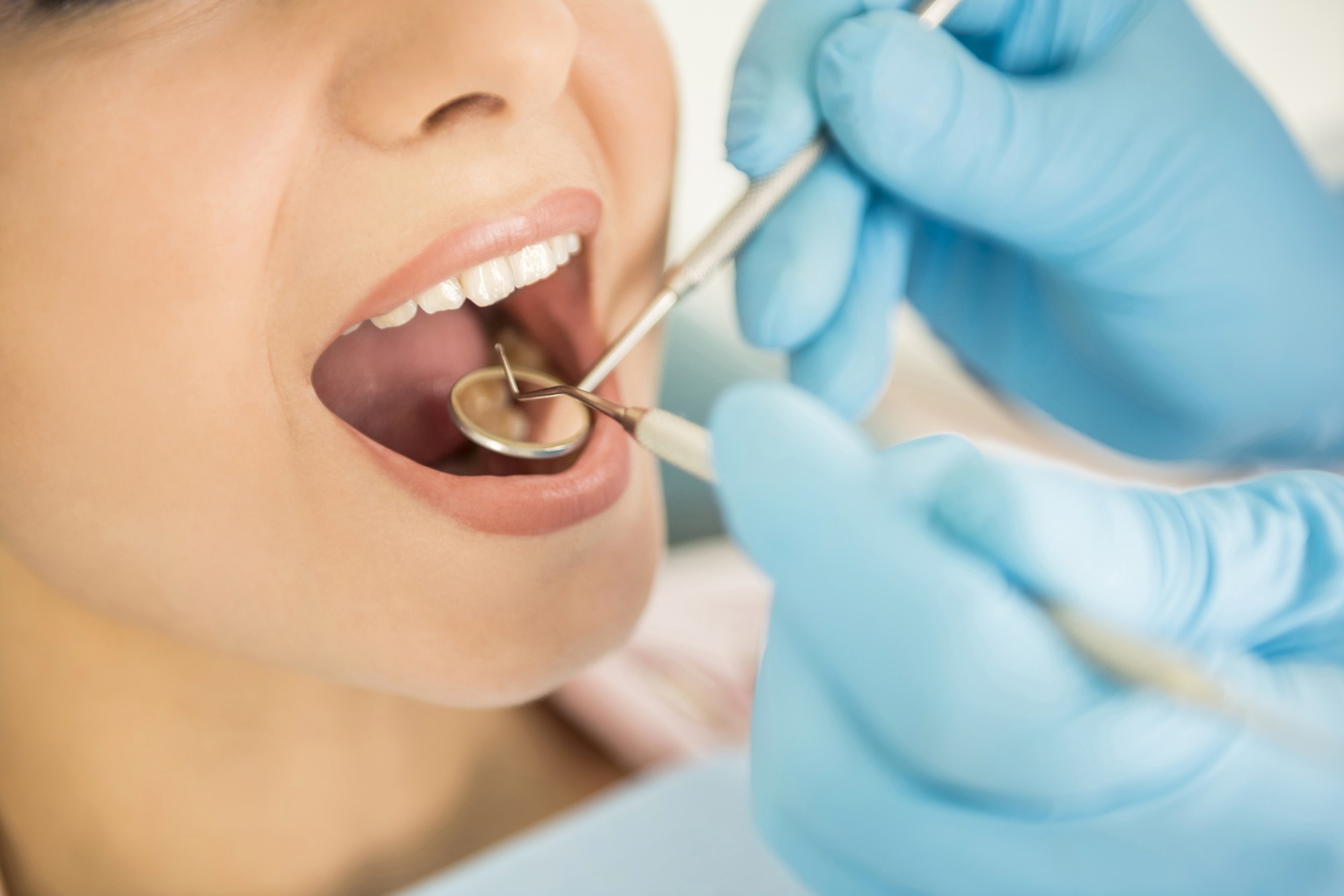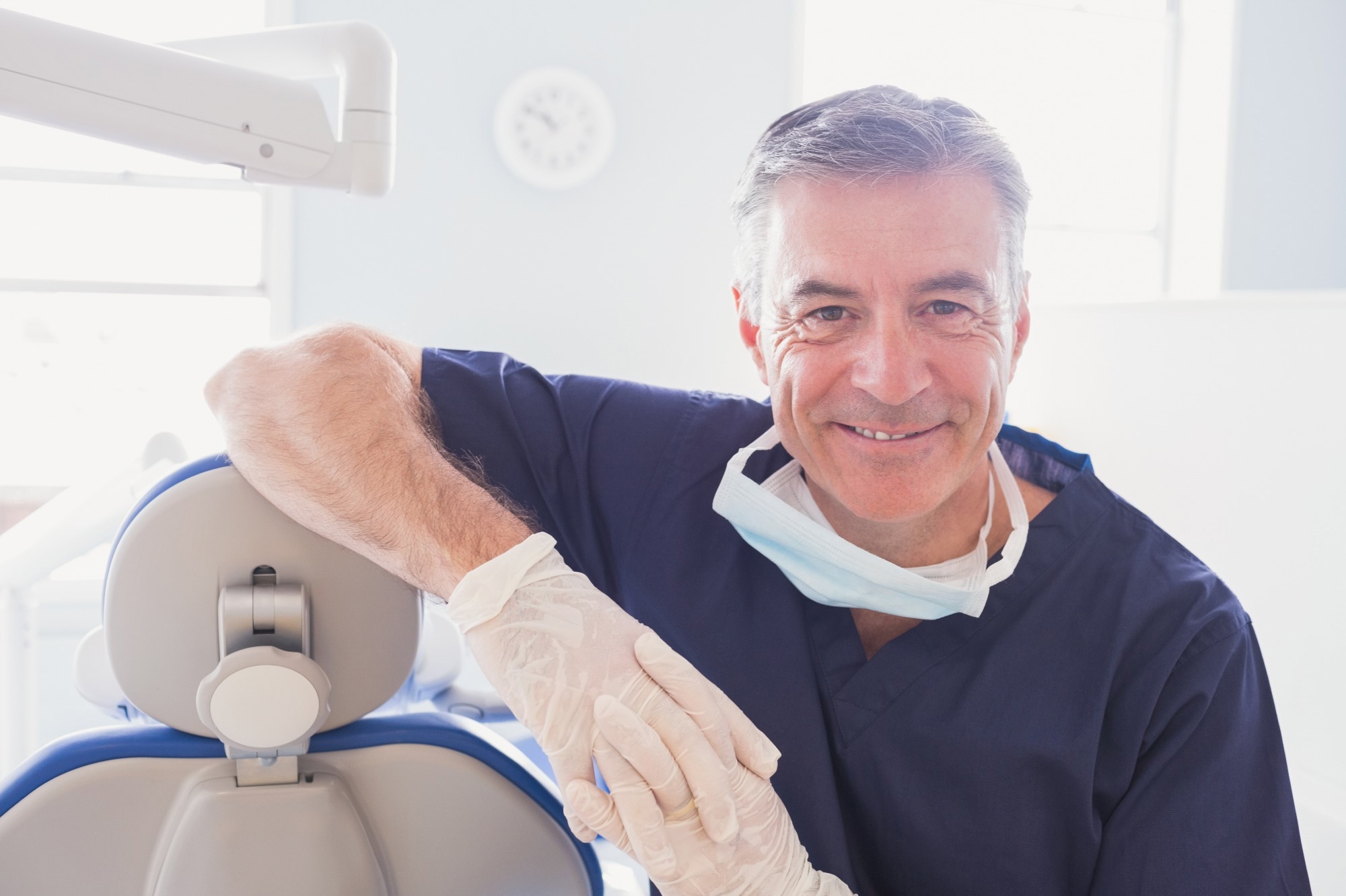Understanding the causes of gag reflex at the dentist
Strategies for managing and reducing gag reflex
The role of dental professionals in mitigating gagging
Advances and solutions in dentistry for gag-sensitive patients
References
Further reading
The gag reflex can be an issue for many patients during dental visits and orthodontic treatments. This can be an upsetting and unpleasant experience for the patient while also creating difficulties for the practitioner.
In turn, it can be highly difficult to perform the needed treatment on a patient who is gagging or who is troubled and stressed by their gag reflex.1
 Image Credit: VGstockstudio/Shutterstock.com
Image Credit: VGstockstudio/Shutterstock.com
Understanding the causes of gag reflex at the dentist
Gagging has a biological and psychological underpinning. The gag reflex prevents potentially harmful foreign objects from entering or impacting the respiratory and gastrointestinal systems by forcing the object back out of the entrance.2
It is an evolutionary defense mechanism developed to safeguard the various body parts, including the pharynx and larynx, and it is triggered completely by instinct.1
The gag reflex's instinctual nature means it is also a completely involuntary reaction.1 Certain parts of the mouth and throat contain nerve endings known as sensory receptors. When stimulated, these receptors trigger a reflex by causing signals across several cranial nerves, which can lead to muscular contractions.2
Various tools and implements used during dental treatment could trigger the gag reflex by stimulating such nerves, depending on which area of the mouth they impact.
The back and side walls of the throat, parts of the tongue, the tonsils, and the soft palate are all areas of the oropharynx, particularly associated with transmitting information to the cranial nerves and triggering the gag reflex.2
Gag reflex anatomy
Strategies for managing and reducing gag reflex
The gag reflex can be managed both holistically and also through the use of medical or therapeutic interventions.
Some interventions explored in dental science include pharmaceutical treatments, behavioural or psychological therapies, herbal remedies, prosthetics, acupuncture, and acupressure.
Examples of pharmaceutical interventions that may be used include anaesthetics, sedatives, and anti-nausea medications.1
Interventions for managing the gag reflex during dental visits are split into either pharmacological or non-pharmacological treatments.2
Some pharmacological treatments that have been explored include the use of Propofol, Midazolam, and Nitrous Oxide, as well as local anesthetics such as Benzocaine and Lidocaine.2 Non-pharmacological treatments, on the other hand, can be more wide-ranging and varied.
Non-pharmacological treatments also have the potential to reduce gagging, although the research findings are perhaps less clearly defined than in the case of pharmacological treatments.
Distraction techniques, such as music, playing games, and completing puzzles, have all been tested as potential methods for reducing the gag reflex during treatment.2 These methods can also be widely useful in dental management, particularly concerning managing dental anxiety or stress.3
Researchers at the Universiti Teknologi MARA investigated the effectiveness of listening to music in mitigating gagging while taking dental impressions.3
The patients listened to the music of their choice during their appointment while monitored psychologically and physiologically and completed Self-reported Gagging Problem Assessment questionnaires (GPA-pa-SF).
While music did not significantly decrease levels of gagging as measured by the GPA-pa-SF, there was a significant decrease in stress levels across all measures - suggesting that music could be a useful tool for managing dental anxiety.3
The role of dental professionals in mitigating gagging
Dental professionals can sometimes administer treatments and interventions to support a patient with a sensitive gag reflex during their dental visit.1 However, there is currently very limited clinical guidance on the subject.2
Pharmacological treatments are generally the responsibility of dental professionals to administer if it is a situation where they see fit. Although a sensitive gag reflex can be activated through a wide range of dental activity, some treatments could be more likely to cause gagging than others.
For example, gagging can be particularly common during the taking of dental impressions.4 Preliminary research suggests that some local anaesthetic could be useful in managing this.
Lidocaine has shown promise as a pharmacological intervention to decrease the sensitivity of the gag reflex while taking such impressions.5
A study undertaken in the College of Dentistry at the University of Lahore tested adding lidocaine to impression materials before using them.
Patients presented with significantly lower levels of gagging behaviors when impressions were taken with lidocaine compared to without, suggesting that the local anaesthetic could be an effective way of managing the gag reflex in such cases.5
 Image Credit: wavebreakmedia/Shutterstock.com
Image Credit: wavebreakmedia/Shutterstock.com
Advances and solutions in dentistry for gag-sensitive patients
Gag-sensitive patients could benefit from a wide range of interventions during dental visits, depending on their differences and their particular course of dental treatment. While the clinical advice available for these circumstances is limited, research into the field is growing.2
One potential treatment for gag-sensitive patients that is being explored is low-level laser therapy.6,1 This research experiments with laser therapy on the acupuncture point of the pericardium (PC6 or P6) with mixed success.
Research conducted by the ITS Dental College tested stimulating the PC6 acupuncture point of paediatric patients with a hyperactive gag reflex using LASER treatments. The patients presented with statistically lower levels of gagging. Moreover, the stimulation also appeared to decrease physiological measures of stress.6
While these findings are promising, the usefulness of PC6 stimulation in managing the gag reflex is not yet fully understood. In 2019, a Cochrane Review analyzed the findings of trials using acupuncture, acupressure, and laser therapies on PC6 to manage dental gagging.1
In the analysis, laser showed low-level certainty evidence that laser stimulation impacted gagging behaviors. Because of the uncertainty of the evidence, the review concluded that the evidence regarding its effectiveness was insufficient.1
Therefore, further future research into the treatment would be required to fully understand its role in mitigating dental gagging.
References
- Eachempati, P., Nagraj, S. K., Krishanappa, S. K. K., George, R. P., Soe, H. H. K., & Karanth, L. (2019). Management of gag reflex for patients undergoing dental treatment. Cochrane Database of Systematic Reviews, (11).
- Mehdizadeh, M., Mohammadbeigi, A., & Sharifinejad, A. (2023). An Overview about New Methods in Management of Gag Reflex during Dental Treatment: A Systematic Review. Journal of Dentistry, 24(4), 372.
- Mustafa, N. W. N. A., Ishak, N. H., Rosli, N. A. M., Zulkifeli, N. R. N., & Rajali, A. (2021). Self-preference music for gagging patient: Effect on physiology and oral health-related quality of life during dental impression. Complementary therapies in clinical practice, 43, 101392.
- Farrier, S., Pretty, I. A., Lynch, C. D., & Addy, L. D. (2011). Gagging during impression making: techniques for reduction. Dental update, 38(3), 171-176.
- Kamran, M., & Qamar, R. (2016). An easy and effective way to reduce gag during orthodontic impression recording. Pakistan Orthodontic Journal, 8(1), 17-20.
- Goel, H., Mathur, S., Sandhu, M., Jhingan, P., & Sachdev, V. (2017). Effect of low-level laser therapy on P6 acupoint to control gag reflex in children: a clinical trial. Journal of acupuncture and meridian studies, 10(5), 317-323.
Further reading